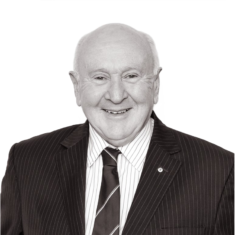Around the world clothing and textiles often attract duty while orthopaedic appliances are more likely to be duty-free. This means that there can often be a debate as whether a product for customs classification purposes is an item of clothing or an orthopaedic appliance. Hunt & Hunt recently successfully represented an importer of mastectomy bras in an appeal to the Administrative Appeals Tribunal (AAT) concerning this issue.
In Amoena Australia Pty Ltd and Comptroller-General of Customs [2016], the AAT held that a specially design mastectomy bra was to be classified as an accessory to an orthopaedic appliance. This had the effect that the entry of the mastectomy bra was duty-free.
The importer was an Australian distributor of artificial breast forms and mastectomy bras. The products are designed specifically for breast cancer survivors who have had a single, bilateral or partial mastectomy. While designed to look like a fashion bra, the Amoena bra had a combination of features (including a pocket to hold the breast form) that were not present in fashion bras.
The first step of the Tribunal was to identify the goods. Importantly, the Tribunal went beyond a simple wharf side test and said that evidence could be considered as to the purpose of the goods. Taking into account evidence that the goods were specifically designed for use with the breast form, the Tribunal identified the goods as bras suitable for use by women who have had breast surgery and those who have not.
The Tribunal then considered whether the goods should be identified as an orthopaedic appliance. It was found that on their own, the mastectomy bras did not fit within the definition of an orthopaedic appliance. They were not an artificial body part, did not perform the function of holding a body part or correcting a bodily deformity.
However, this was not the end of the matter. The goods could still be classified to the duty-free heading if they were considered an accessory to an artificial body part. In this case, there was no doubt that the breast form was an artificial body part. It was held that the mastectomy bra was an accessory to the breast form as:
- It contributes to the working of the breast form
- It is suitable principally with the breast form
- The primary function of the mastectomy bra is to make the wearing of the breast form more comfortable and
- It allows a woman to comfortably and securely use the breast form.
This was despite the fact that the mastectomy bra could be used without a breast form.
The decision provides guidance to all classifications that are dependent on whether a good should be considered an accessory to some primary object, especially those which may have a dual use. Importers of health-related textiles products should consider this decision when deciding on the correct classification of their product.





































































